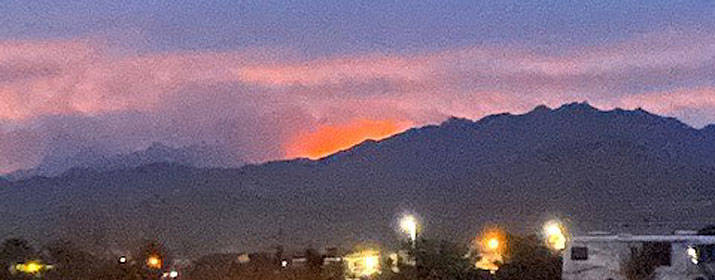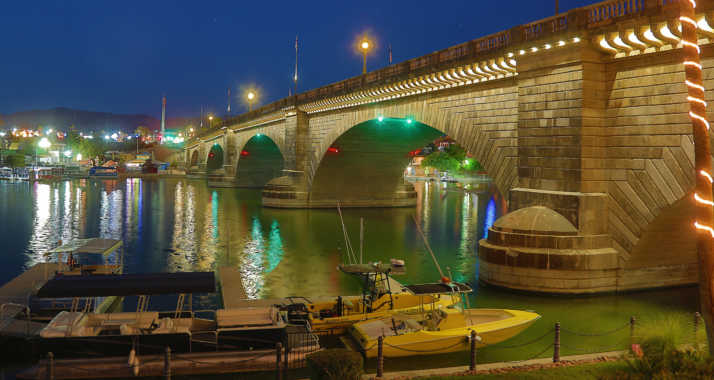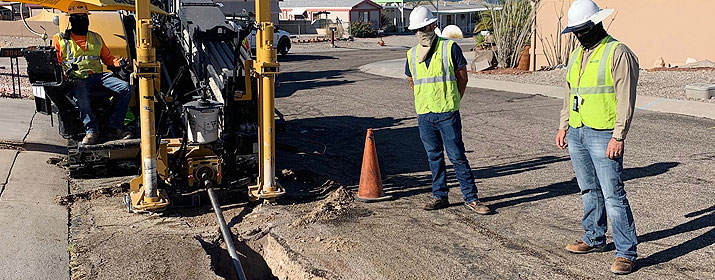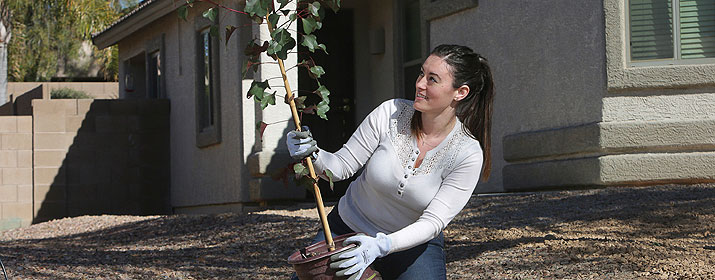
Shortly after the Flag Fire began in the Hualapai Mountains near Kingman on April 25, UniSource’s Crisis Management Team was activated and monitored the fire, which was advancing dangerously close to our communication towers.
Julie McCoy, Systems Operation Supervisor for UniSource’s electric services in Kingman, first noticed the smoke and flames from her back yard soon after the fire began. “I could see plumes of smoke and flames near our communication towers, which are about seven miles from my home,” she said.
McCoy, who had been a dispatcher for Kingman Police and Fire for many years, immediately called her contacts at Mohave County Emergency Management and Mohave Electric Cooperative to gather information. Her next call was to brief Risk Management Analyst Gustavo Maldonado, who leads our crisis management team, or CMT.
The team met regularly to receive status updates from UniSource’s Safety Specialist Travis Morton. As our “boots on the ground,” Morton was stationed near the fire and had direct access to the responding agencies so that he could relay information our team.
“For my safety, the closest I was allowed to get to the fire zone was about 3.5 miles away,” Morton said. “Having contact with the command center allowed me to get the latest updates from the local Bureau of Land Management office and the fire incident management teams that were on-site.”
Although UniSource has no electric or gas transmission facilities in that area, the fire had doubled in size overnight and had come to within a mile of our communication towers at Hayden and Getz Peaks. Had the fire reached our towers, it would have the jeopardized our microwave and radio communications.
While we have contingency plans that call for using alternative communication relays in the event those towers are unusable, this would have slowed our network communications, created some “dead zones” for radio service and required manual control of some grid components.
“Our company, along with first responders, depend on those towers for daily communications. So it was in everyone’s interest to protect the residents, homes and structures on that mountain,” McCoy said.
By May 3, the efforts of more than 500 firefighters – with a little help from some needed rain and snow – were able to contain the fire at 88 percent.
“The lack of drone activity also helped efforts,” added Kasy Schug, Transmission Vegetation Project Manager. “The public should never fly drones near active fire zones as they did during the Big Horn Fire last year as this prevents aircraft from flying and dropping retardant and can delay progress.”
Maldonado said UniSource’s quick response demonstrates our preparedness to manage situations like these when they arise.
“Our response to the Flag Fire underscored the importance of monitoring situations in advance before they become a threat,” he said. “We quickly assembled our team, received timely updates from responding agencies and were prepared with contingency plans. I couldn’t be prouder of how our team performed. Everyone contributed and it was all hands on deck.”
UniSource’s CMT holds annual tabletop exercises with other teams to prepare for emergencies and improve our response. We also participate in emergency drills coordinated by local and state government and first responder agencies.
Additionally, our crews work year-round to reduce the risk of devastating wildfires by inspecting, maintaining and upgrading our equipment and transmission lines to ensure that vegetation does not encroach on our electric infrastructure.






